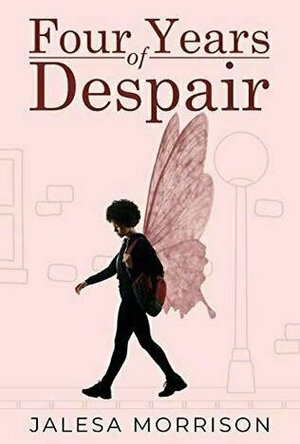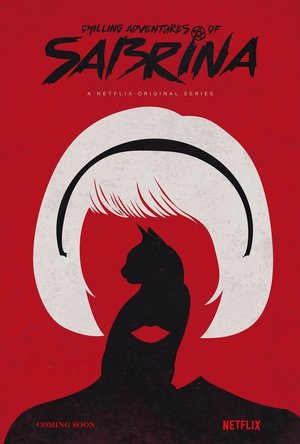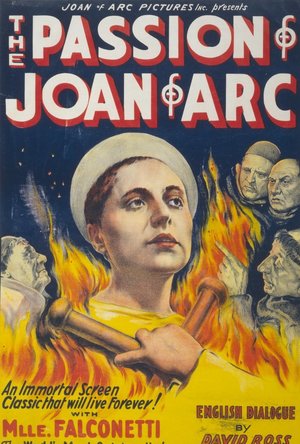Night Reader Reviews (683 KP) rated Four Years of Despair in Books
Jan 9, 2020
content.
Four Years of Despair by Jalesa Morrison was a shocker to say the least. It is hard to find the words to accurately describe this book and do it justice. Normally I would complain about the repetitiveness of a book. In this case the repetition accurately portrays the events in the book. I can easily see this being extended into a larger novel if Jalesa Morrison feels confident enough in her ability to stay accurate and go deeper into each character. Parts of this book did make me cringe multiple times. At first I did not like this book at all but then I figured it out. This book is not meant to be liked. It is meant to infom, to show what sever meutal illuess laaks like behind closed doors. It shows what the individual and family members go through on a daily basis that most people do not see or understand.
Jalesa tells the story of thirteen year old Jaunell Morris, her sis ters Lois and Francis, and their mother Joan. Jaunell was your typical preteen up until around her thirteenth birthday. It was then that
Jaunell was diagnosed with a bipolar disorder that also causes her to become extremely depressed. Joan freqiently struggles to get Jaunell to take a shower or even go to school. This also makes it difficult for Joan to hold a job and she has to ask her own mother (Jamell's grandmother) for financial assistance.
Jaunell lashes out and physically attacks her family members miltiple times.
Between Jaunell's lack of bodily cleanliness and her physical outbursts, Joan's friends turn their back on Joan and many of their family members disown Jaunell. Joan's mother blames Joan for Jaunell's behavior and tells her that she is a bad mother. Jaunell's father leaves Joan because he can not handle Jaunell. Lois and Francis also turn their backs on their sister after being hurt by her multiple times. These are only a few of the relationships that are destroyed because of a lack of understanding. Joan becomes depressed as well and ends up abusing Jaunell because she believes everything to be Jaunell's fault even though she knows in her heart that it is not true. Jaunell spends four years in and out of hospitals countless times before her mother has the financial ability to send Jaunell to a long term care facility. But there is hope...
What I liked best was Jalesa's blunt honesty about what is going on. Jalesa tells the story of Jaunell and her family without the fear of offending anyone. Jaunell's story is one that needed to be told. What I liked least was the lack of depth to the characters. In fact, I found it to be mildly disappointing. Also, there were times where I did not agree with what was happening, but that is nothing against the book. That was my personal rejection of admitting that there are people suffering like this every day.
Target readers for this book were hard to determine because of the nature of the topic. It truly depends on the individual's mindset. I believe high school students and older could handle this book. At the same time, the message would be good for middle school students as well but might be hard for them to read. This book got a sold 3 out of 4 rating from me. The only reason it did not get a perfect rating was that I would like to see more depth.
https://www.facebook.com/nightreaderreviews

Cruising Yachts: Design and Performance
Thomas Harrison Butler and Ed Burnett
Book
Dr Thomas Harrison Butler was a skilled, yet amateur, designer responsible for some hundreds of...
Sarah (82 KP) rated Chilling Adventures of Sabrina in TV
Nov 7, 2018
Had me gripped from beginning of the series. Starting off as a half-mortal, half-witch, Sabrina must partake in a dark baptism. This is where her mortal side comes in, she doesn't want to lose Harvey or her friends and attend a new school so refuses to sign her name over to the dark lord. Cue a court case in the witching world and Sabrina with a mortal representative....what could go wrong?!
The series continues with it seems Sabrina leaning more to the darker side of her powers with the help of her 'school teacher'
I won't spoil the ending of the series but it is definitely worth watching. Having grown up with the Melissa Joan Hart version of Sabrina I thought I would of made more comparisons but this really does stand alone, the only similarities is obviously the names.
Really hoping I won't have to wait too long to watch the next series.
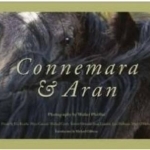
Connemara & Aran
Book
German-born Walter Pfeiffer is one of Ireland's leading names in the world of photography and in...
RəX Regent (349 KP) rated The Passion of Joan of Arc (1928) in Movies
Feb 19, 2019
The notion is that silent movies where almost amateurish is style, a three decade long film school to keep up occupied until the Talkies turned up and “film” as we know it, was born. This is wrong. Film is visual medium, Movies, moving pictures, all of which were accompanied by music by the way, so the term “silent” only really refers to the lack of synchronized sound and dialogue.
ydvjeYet, the core of film is visual. Modern cinema is a about perfecting the mesh of media forms, music, photography, narrative and sound. But without dialogue, silent movies had a challenge on their hands and one which The Passion Of Joan Of Arc, one of the last silent movies of the era, rose to perfectly.
Visually, this could have been made yesterday. A truly timeless blend of artistic and innovative cinematography, fast paced editing and outstanding performances. The Danish director, Carl Theodore Dreyer mastered the close up, naturalistic acting and manages to tell the procedural story of the trial of Joan Of Arc in such a gripping manner that you will forget that there is no spoken dialogue, yet you are literally putting the intertitles in to the mouths of the cast.
Not a single cast member is wasted, with every one pouring their hearts and souls in to the camera in such nuanced ways that it can be left to debate and interpretation as to exactly who is thinking or feeling what as Joan, Maria Falconetti in her third and final film role, steals the screen with her tortured soul and face shown almost entirely in close up.
the-passion-of-joan-of-arc-large-pictureOver acting has given way to strong acting, each shot designed to allow us access to her soul as she, in a plot not to dissimilar from the last hours of Jesus Christ, is torn between torture and certain death of abandoning her faith and spending the rest of her life imprisoned with only bread and water to look forward too.
The script is based on the actually accounts of the future saint’s trial in 1431 but the real events took place over 18 months whilst this either compresses this into one day or takes place on the last one, but the feeling is that this is the one and only trial of Joan so in that sense, theatrical licence has been taken but it hardly matters. The facts are present and the story is harrowing, made more so by an almost perfect production, led by a controversial, almost Kubrickian director, forcing his cast to suffer for their art, yet this version of events is also contested.
joan-of-arc-soundtrackFor everyone out there who believes that Silent movies are just cut to the chase comedies, or overly flamboyant and patronising filler until “real films” are made, this may just serve as wake up call, that films have evolved, but Sound would actually set the industry back in the 1930’s, as the new audio based art form evolved just as movies had up until this point., but Joan Of Arc should help all see that film has always been able to convey anything, from humour to horror; Real of make-believe.
Many believe that this movie is one of the best ever made and I do believe that to be true. An outstanding and forgotten film to all but critics and film buffs, one which everyone should see.
VERSION
The version which I watched was The Criterion Edition of the 1985 restoration of Dreyer’s “Lost” original cut. The music to this film was never deemed to be that important so there are several compositions which have been attached to the film over the years.
The “Lo Duca” cut, which was the a 61 minute version (1951) doing the rounds for years after the original cut was lost in a fire soon after the film’s release, was cut together by Joseph-Marie Lo Duca after discovering a negative in a vault. This version, as well as the “Director’s Cut” are both available on the Blu-ray, whilst it appeared that the 1985 restoration (Director’s Cut) is more widely available on DVD.
Skippy: Volume 3: Complete Dailies 1931-1933
Book
"One of the great, lost classics of the newspaper age. The best. Simply the best." - New York Times...

Fawlty Towers: The Complete Collection: Every Soundtrack Episode of the Classic BBC TV Comedy
John Cleese, Connie Booth and Prunella Scales
Book
John Cleese's special introductions to each episode are included in this collection of all 12 TV...

Virginia Woolf: Ambivalent Activist
Book
Virginia Woolf taught history at Morley College for adult education; addressed envelopes in an adult...
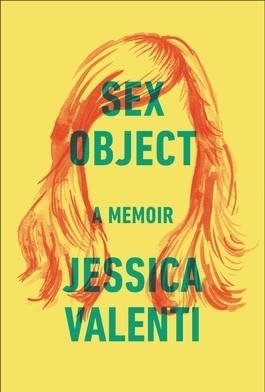
Sex Object: A Memoir
Book
New York Times Bestseller NPR Best Book of 2016 "Sharp and prescient...The appeal of Valenti's...

The Book of Pears: The Definitive History and Guide to Over 500 Varieties
Book
This book is the winner of the Garden Media Guild Awards Reference Book of the Year 2016, the Guild...
